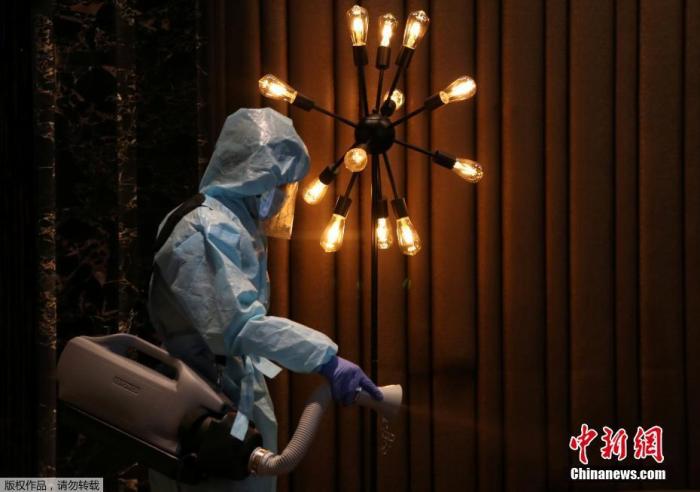Chinanews, January 17th, a comprehensive report, on the 16th local time, India launched what it calls "the world's largest COVID-19 vaccination plan", and hopes to inject about 300 million people by the end of July.
According to reports, India has a total population of 1.3 billion, and the cumulative number of confirmed new crowns ranks second in the world, exceeding 10.5 million.
The Indian government plans to vaccinate about a quarter of the country’s population in the first phase, including medical personnel, people over 50, and other high-risk individuals.
Data map: In Mumbai, India, a worker wearing personal protective equipment disinfects seats before the Inox Leisure cinema reopens.
At present, the Indian government has set up 3,006 vaccination centers across the country, and it is expected that the vaccination points will gradually increase to 5,000 in the next few weeks.
According to the arrangement, 30 million health and other frontline staff will be vaccinated first, followed by about 270 million people over the age of 50 and other high-risk groups.
However, there are reports that India’s new crown vaccination plan is facing huge challenges in terms of safety and logistics.
On January 3, the General Administration of Medicines and Drugs of India officially approved the emergency use of two new crown vaccines, one is the "Covishield" vaccine jointly developed by the University of Oxford and AstraZeneca, and the other is developed by Bharat Biotech. Named "Covaxin".
The Indian authorities have ordered 11 million doses and 5.5 million doses respectively for the first batch. Both vaccines are produced in India, but people cannot choose the type of injection.
Somani, director of the General Administration of Drug Administration of India, once stated that the overall effectiveness of the Covishield vaccine is 70.42%. Covaxin has not yet released the effectiveness data of the third phase clinical trial, but emphasized that both vaccines are 100% safe.
On the other hand, due to the weak infrastructure in India, the distribution of the new crown vaccine is expected to put pressure on the logistics industry.
According to the report, the Indian government currently has 4 "super large warehouses" to receive the vaccines shipped, and then use temperature-controlled trucks to transport the vaccines from the warehouses to distribution bases in various provinces.
In order to ensure the vaccine’s activity, the Indian government has prepared hundreds of thousands of cold storage tools for vaccines, including more than 29,000 cold chain locations, 240 cold storages, 70 freezers, 45,000 ice-lined refrigerators and 41,000 ultra-low temperature freezers. cabinet.
Once Indian summer comes, these devices will come in handy.
In order to prevent vaccines from being stolen and sold to the black market, the Indian authorities have also arranged armed police to protect each vaccine delivery truck, and installed monitors in the storage warehouses, and fingerprints are required to enter.
In addition, India has arranged a total of about 150,000 trained staff in 700 counties across the country to perform vaccination and tracking records. It also plans to use the self-developed CoWIN application (app) to link each dose of vaccine to the people receiving the injection, and manage the entire vaccination process digitally, hoping to overcome the challenges faced by the vaccination plan.

